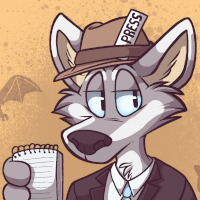The Art of Trolls, by Jerry Schmitz – Book Review by Fred Patten
by Pup Matthias
Submitted by Fred Patten, Furry’s favorite historian and reviewer
 The Art of Trolls, by Jerry Schmitz. Foreword by Anna Kendrick.
The Art of Trolls, by Jerry Schmitz. Foreword by Anna Kendrick.
Petaluma, CA, Cameron + Company, October 2016, hardcover $45.00 (160 pages).
Trolls is a 92-minute 3D computer-animated musical comedy fantasy feature film from DreamWorks Animation, released on November 4th, 2016. The Art of Trolls is a coffee-table, full-color art book describing that film, and its making, in detail. Jerry Schmitz, the book’s author, is a Hollywood PR, marketing, brand management, and awards consultant veteran who has written several other The Art of animation books before. The foreword is by Anna Kendrick, the voice actress of Princess Poppy, one of the film’s two stars.
From a furry viewpoint, Trolls and this book are dubious subjects. No anthropomorphic animals appear in either. Yet the trolls aren’t human, either. If you consider humans to be a species of animals, then trolls qualify as anthros. Anyway, here it is. You decide if it is of interest to you.
The Art of Trolls is a de luxe art book about the film and its making, with detailed visual samples and background information. For those interested in the film, this book is worth getting for the names of all the characters alone. The rejected preliminary designs of the main characters will be fascinating, also.
The popular troll dolls as a merchandising phenomenon were created by Danish woodcutter and fisherman Thomas Dam in 1959, when he could not afford to buy a Christmas gift for his young daughter Lila. She showed the wooden dolls to her friends in Gjøl, Denmark; they all wanted troll dolls; Dam realized their potential; and he and his family created the Dam Things company to mass-produce them in plastic. Troll dolls became one of the biggest toy fads in the U.S. from 1963 to 1965, and have never stopped selling well. DreamWorks Animation licensed the rights to feature them in a movie in 2013. Here it is.


 Conventional Wisdom, by Arthur Drooker. Foreword by James Wollcott.
Conventional Wisdom, by Arthur Drooker. Foreword by James Wollcott. Shock. From beginning to end. If you ever want a book to slap you in the face as hard as possible, this…this is for you.
Shock. From beginning to end. If you ever want a book to slap you in the face as hard as possible, this…this is for you. The Familiar: A Paranormal Romance, by Jill Nojack
The Familiar: A Paranormal Romance, by Jill Nojack Dawn, by Marcus J. LaGrone. Illustrated by Minna Sundberg.
Dawn, by Marcus J. LaGrone. Illustrated by Minna Sundberg. Spirit Hunters. Book 3: Tails High, by Paul Kidd. Illustrated.
Spirit Hunters. Book 3: Tails High, by Paul Kidd. Illustrated. ROAR volume 7, Legendary, edited by Mary E. Lowd.
ROAR volume 7, Legendary, edited by Mary E. Lowd. Fragments of Life’s Heart, volume 1, editors: Laura “Munchkin” Lewis [&] Stefano “Mando” Zocchi.
Fragments of Life’s Heart, volume 1, editors: Laura “Munchkin” Lewis [&] Stefano “Mando” Zocchi. Helga: Out of Hedgelands, by Rick Johnson. Map.
Helga: Out of Hedgelands, by Rick Johnson. Map. The Digital Coyote, by Kris Schnee.
The Digital Coyote, by Kris Schnee.